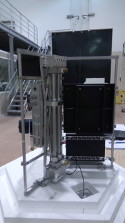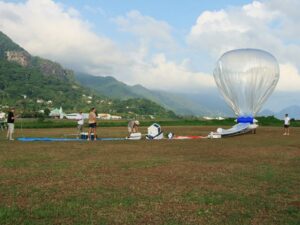Instruments in LMD
AEROCLIPPER
AS soon as. Lorem ipsum dolor sit amet, purus tempus magna praesent eros vestibulum auctor, ante erat justo, eu suspendisse in, velit orci sit quisque orci egestas sed. Proin a metus arcu neque ridiculus nunc, vel mauris, feugiat molestie ves It exists since.
AS soon as. Lorem ipsum dolor sit amet, purus tempus magna praesent eros vestibulum auctor, ante erat justo, eu suspendisse in, velit orci sit quisque orci egestas sed.
Proin a metus arcu neque ridiculus nunc, vel mauris, feugiat molestie ves
It exists since.
AIRCORE
AS soon as. Lorem ipsum dolor sit amet, purus tempus magna praesent eros vestibulum auctor, ante erat justo, eu suspendisse in, velit orci sit quisque orci egestas sed. Proin a metus arcu neque ridiculus nunc, vel mauris, feugiat molestie ves It exists since.
AS soon as. Lorem ipsum dolor sit amet, purus tempus magna praesent eros vestibulum auctor, ante erat justo, eu suspendisse in, velit orci sit quisque orci egestas sed.
Proin a metus arcu neque ridiculus nunc, vel mauris, feugiat molestie ves
It exists since.

BBOP
B-BOP (for Balloon-Borne Ozone Photometer) is an instrument that measures ozone during stratospheric superpressure balloon flights. Figure Bbop: B-BOP mechanical structure integrated on the Strateole-2 science gondola, Zephyr.
The instrument made its first flights in 2010 during the Concordiasi campaign in Antarctica and contributed to the first Lagrangian measurements of the ozone destruction rate.
B-BOP is a UV photometer that works in the Hartley band of ozone (at 250 nm). The challenge of the instrument was to miniaturize it enough to make it compatible with the constraints of superpressure balloon flights.
Reference :
- Schofield, R., L. M. Avallone, L. E. Kalnajs, A. Hertzog, I. Wohltmann, and M. Rex, First quasi-Lagrangian in situ measurements of Antarctic Polar springtime ozone: observed ozone loss rates from the Concordiasi long-duration balloon campaign, Atmos. Chem. Phys., 15, 2463-2472, 2015. DOI: https://doi.org/10.5194/acp-15-2463-2015

SAWPFHY
SAWfPHY (for Surface Acoustic Wave frost-Point HYgrometer) is an instrument capable of measuring stratospheric water vapor. Figure SAWfPHY : SAWfPHY’s sensing head, cooled by a Peltier TEC element.
It was designed at LMD within the Stratéole-2 project to study troposphere-stratosphere exchanges in the tropics. SAWfPHY made its first stratospheric superpressure balloon flight in Seychelles Islands in 2019.
The instrument is a frost point hygrometer, using surface acoustic waves for condensate detection. The sensitive element of SAWfPHY is developed by FEMTO-ST (https://www.femto-st.fr) in Besançon, France.

Figure SAWfPHY : SAWfPHY inlet and radiator used during its first long-duration flight in Seychelles in 2019.

TSEN
The Tsen instrument (for Thermodynamic sensors) was developed at the LMD in the framework of the Stratéole/Vorcore project at the turn of the 2000’s. Figure Tsen : 125-µm diameter temperature sensor used by the Tsen instrument.
This instrument is embarked on stratospheric superpressure balloon flights and provides air pressure and temperature measurements. The Tsen data are used in conjunction with GPS observations performed on board the balloons. This set of measurements has notably allowed to document very precisely the gravity-wave activity in the stratosphere, both in the polar regions and in the tropics.
The Tsen instrument has constantly evolved since then along with balloon projects of the laboratory: Concordiasi in 2010, Stratéole-2 since 2019. The pressure measurements are now obtained with a temporal resolution of 1 Hz, allowing to address atmospheric turbulence.

Figure Tsen : Tsen ultra-light electronics housing machined at LMD.
References :
- Hertzog, A., et al., Stratéole/Vorcore — Long-duration, superpressure balloons to study the Antarctic lower stratosphere during the 2005 winter, J. Atmos. Ocean. Technol., 24, 2048-2061, 2007. DOI: https://doi.org/10.1175/2007JTECHA948.1
- Hertzog, A., G. Boccara, R. A. Vincent, F. Vial, and Ph. Cocquerez, Estimation of gravity-wave momentum fluxes and phase speeds from quasi-Lagrangian stratospheric balloon flights. 2: Results from the Vorcore campaign in Antarctica, J. Atmos. Sci., 65, 3056-3070, 2008. DOI: https://doi.org/10.1175/2008JAS2710.1
- Podglajen, A., A. Hertzog, R. Plougonven, and N. Žagar, Assessment of the accuracy of (re)analyses in the equatorial lower stratosphere, J. Geophys. Res., 119, 11,166-11,188, 2014. DOI: https://doi.org/10.1002/2014JD021849
Observations in LMD

Balloons
Here Balloons
The LMD develops innovative instruments embarked under balloons to study the dynamics of the boundary layer (air-clippers, boundary layer pressurized balloons) or of the stratosphere (pressurized balloons or open stratospheric balloons) and to study atmospheric composition (AirCore sounding).

Lidar
LIDAR The LMD has developed since the 80’s an internationally recognized expertise in laser atmospheric sounding.
Laser remote sensing or lidar, an acronym for “light detection and ranging” or “laser detection and ranging”, is a remote measurement technique based on the analysis of the properties of a laser beam sent back to its transmitter. The LMD addresses the scientific challenges of innovative lidar instrumentation for new observations and studies in the atmosphere on aerosols, dynamics, and greenhouse gases, particularly at the troposphere-biosphere and intra-atmosphere interfaces with applications in climate and the environment. The research projects link two fields of physics: (1) laser and optics (2) physics and chemistry of the atmosphere.
The LMD has been developing for more than 30 years, Doppler lidars for wind measurements, differential absorption lidars for the measurement of gas concentration (in particular CO2, CH4), lidars to measure the fluorescence of vegetation allowing access to key variables in the functioning of vegetation in relation to the carbon and water cycle.

SIRTA
SIRTA is a national multi-instrumental site dedicated to the observation of the atmosphere, located in Palaiseau, near Paris…
It was founded in 1999 on the initiative of the Institut Pierre Simon Laplace (IPSL – Research Federation of the CNRS) and the Ecole Polytechnique to federate research (fundamental or applied) and teaching activities of laboratories in the Paris region in the fields of instrumentation and atmospheric measurements. The SIRTA is a service of the IPSL.
The SIRTA is a reference tool at the European and international levels. It gathers and coordinates the instruments and competences of ten research units (mainly IPSL, LMD, LATMOS, CEREA, LSCE; but also LISA, CNRM, LPC2E, IPGP, GEEPS, LIMSI). The scientific purpose of SIRTA is to provide innovative tools to (1) understand and quantify the effects of local processes on the climate anomalies frequently encountered in the Paris region in order to identify areas of adaptation that can reduce these effects ; (2) to quantify the impacts on the regional climate of upper tropospheric ice clouds formed by air traffic; (3) to improve our understanding of the processes driving low clouds and winter fog that strongly impact traffic and summer convective clouds that can create severe thunderstorms, in order to better predict and quantify their effects; (4) precisely characterize the nature of the different sources of aerosols encountered in the Paris region and their evolution, in order to bring precise constraints to future air quality regulation decisions; (5) quantify and precisely characterize the efficiency of photovoltaic and wind power generation systems in real conditions, and develop solutions to make them more adapted to consumption needs.

Space
The LMD not only exploits numerous spatial data…
The LMD not only exploits a large amount of space data and proposes concepts for new missions, but also has a significant activity in the development of instrumentation used as a prototype for space missions.


